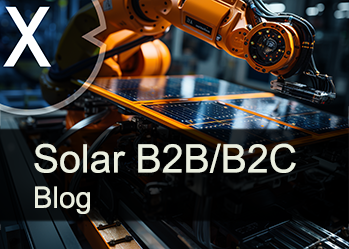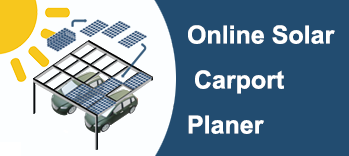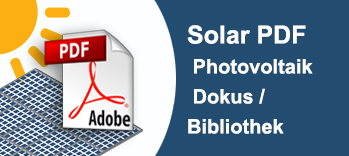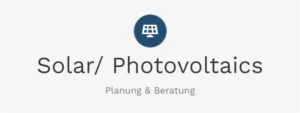Solar park Eisenburg near Memmingen: Large open-space photovoltaic system (13 football fields) in planning
Xpert pre-release
Language selection 📢
Published on: August 13, 2025 / Updated on: August 13, 2025 – Author: Konrad Wolfenstein

Eisenburg Solar Park near Memmingen: Large open-space photovoltaic system (13 football fields) in planning – Creative image: Xpert.Digital
13 football fields in size: Memmingen plans huge new solar park directly next to the railway tracks
Clever location: Why Memmingen's new solar park is being built right next to the railway line
A significant photovoltaic plant is to be built in the southern part of the Memmingen district of Eisenburg, making a significant contribution to the regional energy transition. The project is located directly adjacent to the Memmingen-Buchloe railway line and marks another milestone in the expansion of renewable energies in the region.
Planning procedures and decisions
Memmingen's Building, Planning, and Environmental Committee has already set the course for this ambitious project and initiated a corresponding development plan. This decision was unanimous and demonstrates the broad political support for the project within the city. The administration has been instructed to initiate the necessary development plan process to create the legal prerequisites for the construction of the photovoltaic system.
The planning process follows a structured approach, which involves the creation of a development plan. This approach offers the project developer greater flexibility in the technical design of the system and allows for adaptation to dynamic developments in the photovoltaic market. At the same time, this approach does not impose any disadvantages or additional obligations on the city of Memmingen.
Project developer and company profile
The solar park's implementation is in the hands of Vensol Neue Energien GmbH, an established company based in Babenhausen. The company, which has been active in the renewable energy sector since 2001, brings extensive experience in project development and the operation of wind and solar power plants. Managing Director Jürgen Ganz founded the company with the vision of developing sustainable and reliable energy projects that simultaneously enable high regional added value.
Vensol already has an impressive track record in the region. The company successfully connected seven wind turbines and more than 50 megawatts of photovoltaic capacity to the grid in 2024 alone. Four additional solar parks were completed in the first quarter of 2025. The company's pipeline is well-filled: Secured sites for an additional 150 megawatts are currently undergoing the necessary permitting procedures, while projects with a total capacity of over 300 megawatts are in the early stages of development.
System specifications and technical details
The planned solar park will cover an area of approximately nine hectares. To illustrate this scale, the facility will cover an area approximately equivalent to 13 football fields. This scale allows for the installation of a significant number of photovoltaic modules and thus a considerable power generation capacity.
Based on current technical standards and comparative values from similar systems, an installed capacity of between 6 and 9 megawatts can be assumed. Modern photovoltaic systems typically achieve a power density of around 1.5 megawatts per hectare. For a system area of nine hectares, this would correspond to a total capacity of approximately 13.5 megawatts, although the actual capacity depends on various factors such as the selected module technology and the system design.
The projected annual electricity generation is expected to be in the range of 8 to 12 million kilowatt hours. This estimate is based on the typical yields of comparable systems in southern Germany, where, due to higher global radiation, approximately 10 to 15 percent more solar energy can be generated than the German average.
Strategic location and transport links
The solar park's location south of Eisenburg, in close proximity to the Memmingen-Buchloe railway line, is both strategically and legally advantageous. This location benefits from simplified permitting procedures for photovoltaic systems along transportation infrastructure. Since January 2023, areas along highways and double-track railway lines with a width of up to 200 meters have been considered privileged locations under building regulations.
This privileged status allows for the construction of open-space photovoltaic systems under simplified approval procedures. A development plan is not mandatory for privileged sites, reducing administrative burdens and accelerating the implementation process. The legal hurdles are thus significantly lower than for other locations.
The Memmingen-Buchloe railway line is part of the overall rail network and is currently being electrified and upgraded as part of the Munich-Lindau line expansion project. These modernization measures underscore the line's importance for transport and make its proximity to the railway infrastructure an additional location advantage for the solar project.
Reference projects and best practices
Vensol boasts an impressive list of successfully completed projects, reinforcing confidence in the company's implementation expertise. Particularly noteworthy are the plants already in operation in the surrounding area:
The solar park in Benningen was successfully commissioned in August 2023 and covers nine hectares along the Ulm-Kempten railway line. With an installed capacity of 9.5 megawatts and an annual electricity production of 10.45 million kilowatt hours, the plant supplies 2,600 four-person households with clean electricity. The participation model is particularly noteworthy: The municipality of Benningen operates part of the plant itself and thus benefits directly from the revenues.
In Bad Wörishofen, Vensol commissioned another solar park in March 2025. The 6.3-megawatt plant, featuring over 10,000 modules, generates approximately 6.9 million kilowatt hours of electricity annually, avoiding 5,530 tons of CO₂ emissions. The project, located south of the A96 motorway, once again demonstrates the successful implementation of photovoltaic projects at locations close to public transport.
The Oberschönegg-Dietershofen solar park, which went online in November 2023, demonstrates another successful cooperation model. On a four-hectare site, approximately 8,000 modules with a total output of 4.3 megawatts generate over five million kilowatt-hours of electricity per year. The plant supplies the equivalent of 1,300 households and offsets 4,000 tons of CO₂ emissions annually.
Energy economic significance and regional impacts
The construction of the solar park in Eisenburg fits into the region's comprehensive efforts to advance the energy transition and reduce dependence on fossil fuels. Unterallgäu has established itself as a pioneering region for renewable energies, as impressively demonstrated by the establishment of the Unterallgäu Regionalwerk (Regional Power Plant) at the end of 2024.
Twenty-nine municipalities and the Unterallgäu district have joined forces to actively and independently shape the energy transition in the district. The regional utility is already planning 17 projects with a total capacity of 81 megawatts, which could theoretically supply more than 47,000 households with electricity. This coordinated approach will enable the participating municipalities to tap into new sources of income while also making an active contribution to climate protection.
The economic benefits of solar parks for the communities hosting them are significant. Municipalities can benefit from the systems in the long term through business tax revenues, lease income, and possible civic participation models. At the same time, the added value remains in the region instead of flowing to external investors.
New: Patent from the USA – Install solar parks up to 30% cheaper and 40% faster and easier – with explanatory videos!

New: Patent from the USA – Install solar parks up to 30% cheaper and 40% faster and easier – with explanatory videos! – Image: Xpert.Digital
At the heart of this technological advancement is the deliberate departure from conventional clamp fastening, which has been the standard for decades. The new, more time- and cost-effective mounting system addresses this with a fundamentally different, more intelligent concept. Instead of clamping the modules at specific points, they are inserted into a continuous, specially shaped support rail and held securely. This design ensures that all forces occurring – be they static loads from snow or dynamic loads from wind – are evenly distributed across the entire length of the module frame.
More about it here:
Future of solar energy: Innovations and potential in the Eisenburg solar park
Technological developments and future prospects
The photovoltaics industry is currently undergoing a phase of rapid technological development, which is also relevant for the Eisenburg project. Modern solar modules today achieve efficiencies of over 20 percent and outputs of 500 to 600 watts per module. These efficiency improvements make it possible to generate more electricity from the same area than just a few years ago.
Current photovoltaic modules typically have an output of 200 watts per square meter. Taking into account the necessary row spacing and access routes, an installed capacity of approximately 1.5 megawatts can be achieved per hectare. This corresponds to a specific area requirement of approximately 0.7 hectares per megawatt of installed capacity.
Particularly interesting is the development of bifacial modules, which can absorb sunlight from both sides and thus achieve higher yields. Vensol is already using this technology in several projects, as demonstrated by the Bad Wörishofen project. By utilizing the reflected light from the rear, additional yields of 5 to 25 percent can be achieved, depending on local conditions.
Environmental and climate protection aspects
The planned solar park in Eisenburg will make a significant contribution to regional climate protection. Photovoltaic systems generate no direct emissions during their operating life and pay for themselves in just a few years. Electricity generation from photovoltaics prevents the emission of climate-damaging greenhouse gases that would otherwise be produced by conventional power generation.
Based on the experience of comparable Vensol projects, the Eisenburg solar park can avoid several thousand tons of CO₂ emissions annually. The Bad Wörishofen solar park, for example, with 6.3 megawatts of capacity, prevents 5,530 tons of CO₂ emissions per year. For the larger Eisenburg park, the CO₂ savings are likely to be correspondingly higher.
Modern solar parks are also designed to minimize their ecological impact. The areas between and beneath the rows of modules can continue to be used as extensive green spaces, providing habitat for various plant and animal species. Many solar parks develop into valuable biotopes that promote local biodiversity.
Network integration and storage options
Integrating solar energy into the existing power grid requires careful planning and appropriate grid connections. Proximity to railway infrastructure can be advantageous, as power lines often already run along railway lines that can be used for feeding power into the grid.
Modern solar farms are increasingly being combined with storage technologies to increase the flexibility of power generation and compensate for fluctuations. Battery storage systems can cushion the midday peak in solar production and feed the generated electricity into the grid during times of lower solar irradiation. This contributes to grid stability and increases the economic value of the solar system.
The development of east-west orientations in solar farms is also gaining momentum. This module arrangement enables more consistent electricity production throughout the day and better reflects natural consumption patterns. This reduces the need for expensive midday power control and facilitates grid integration.
Citizen participation and social acceptance
A key success factor for renewable energy projects is the involvement of the local community. Vensol has demonstrated in several projects that citizen participation models can both increase acceptance and bring additional benefits to the host communities.
The example of Benningen illustrates the possibilities: There, residents can purchase genuine green electricity from the local photovoltaic system at preferential rates. Such direct participation opportunities create an emotional connection between residents and the project and promote identification with the local energy transition.
In addition, citizens can often invest directly in the projects and benefit from the proceeds. Cooperative models or subordinated loans allow interested citizens to participate financially and achieve attractive returns. This form of citizen participation strengthens regional value creation and ensures that profits from energy production remain in the region.
Economic framework and financing
The economic viability of solar parks has continuously improved in recent years. The levelized cost of electricity for new megawatt power plants currently ranges between 4 and 7 cents per kilowatt hour. These low costs make photovoltaics one of the most affordable forms of electricity generation and enable economically viable projects even without government subsidies.
Financing is typically provided through a combination of equity and debt. Vensol typically covers the planning costs through an urban development contract with the municipality. This approach eases the burden on public budgets and ensures that the project developer bears the financial risk.
Long-term planning security is ensured through power purchase agreements or participation in tenders issued by the Federal Network Agency. The Renewable Energy Sources Act (EEG) offers various marketing options that enable stable refinancing of investments.
Future outlook and regional development
The planned solar park in Eisenburg is part of a broader development that is transforming the Unterallgäu region into a model region for the energy transition. The coordinated efforts of the municipalities, the expertise of established project developers like Vensol, and the favorable legal framework create optimal conditions for further projects.
The privileged location on the Memmingen-Buchloe railway line could serve as a model for similar projects along other transport infrastructures. With the ongoing electrification of the railway line, the importance of sustainable energy generation in the region will continue to grow.
The combination of technological advances, low electricity generation costs, and high social acceptance of renewable energies creates a favorable environment for the realization of the Eisenburg solar park. The project will not only contribute to the decarbonization of the regional electricity supply but can also serve as a blueprint for further projects in the region.
Integration into the emerging network of solar parks and other renewable energy facilities in Unterallgäu will contribute to building a resilient and sustainable energy infrastructure. This will not only strengthen climate protection but also regional value creation and the region's energy security.
Look, this little detail saves up to 40% installation time and costs up to 30% less. It's from the USA and patented.

New: Assemble-ready Solar systems! This patented innovation accelerates your solar construction massively
The heart of ModuRack's innovation is its departure from conventional clamp fastening. Instead of clamps, the modules are inserted and held in place by a continuous support rail.
More about it here:
Your partner for business development in the field of photovoltaics and construction
From industrial roof PV to solar parks to larger solar parking spaces
☑️ Our business language is English or German
☑️ NEW: Correspondence in your national language!
I would be happy to serve you and my team as a personal advisor.
You can contact me by filling out the contact form or simply call me on +49 89 89 674 804 (Munich) . My email address is: wolfenstein ∂ xpert.digital
I'm looking forward to our joint project.
























